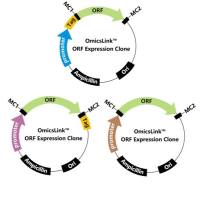Heme Oxygenase Activity Current Methods and Applications
互联网
969
The heme oxygenase enzymes (HO-1 and HO-2) oxidize heme to biliver-din-IXα (BVIXα), releasing carbon monoxide (CO) and iron (Fig. 1 ). HO enzymes control the rate of heme degradation and, consequently, also control the redistribution of the heme iron ( 1 ). The CO generated from the HO reaction affects signal transduction pathways in neuronal and vascular systems ( 2 ).
Fig. 1. The pathway of heme metabolism. Heme oxygenase (HO-1), first described as a microsomal mixed-function oxygenase (E.C. 1:14:99:3, heme-hydrogen donor:oxygen oxidoreductase), catalyzes the rate-determining step in heme metabolism. Both heme oxygenase isozymes (HO-1 and HO-2) oxidize heme (ferriprotoporphyrin IX) to the bile pigment biliverdin-IXa, in a reaction requiring 3 mol of molecular oxygen. The accessory enzyme, NADPH:cytochrome p-450 reductase, reduces the ferric heme iron as a prerequisite for each cycle of oxygen binding and ( continued ) oxygen activation. The cleavage of the heme ring frees the coordinated iron, as well as the α-methene bridge carbon as carbon monoxide. The principle HO reaction product, biliverdin-IXα, is further metabolized by divalent reduction to form bilirubin-IXα, by NAD(P)H:biliverdin reductase. Heme side chains are designated as M, methyl; V, vinyl; and P, propionate.









